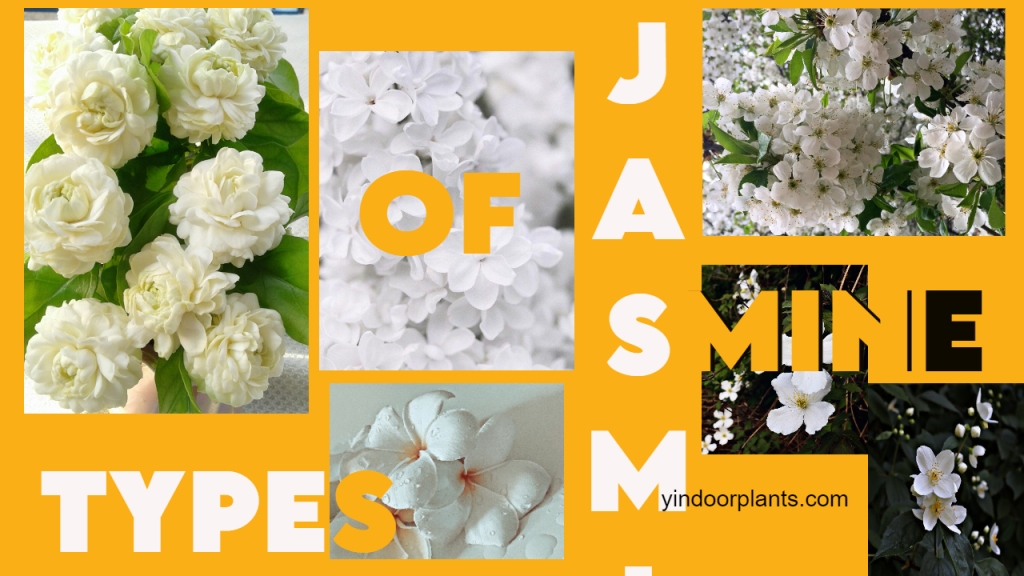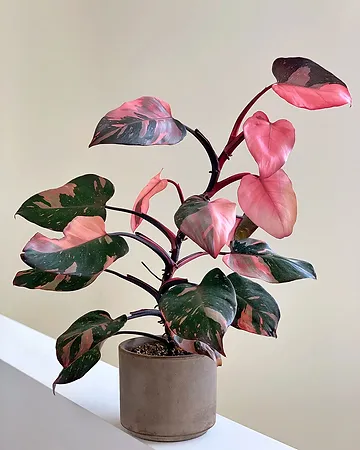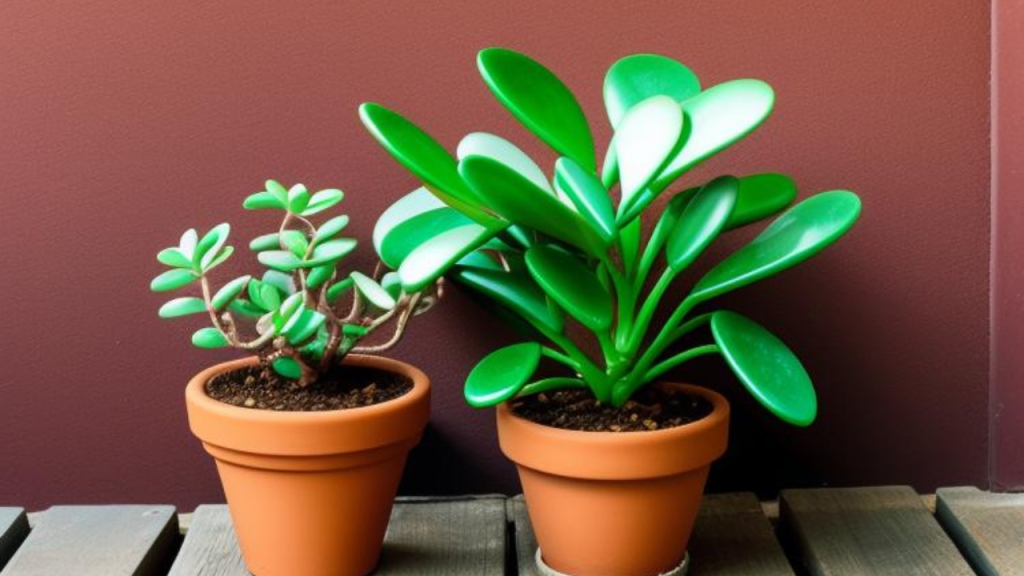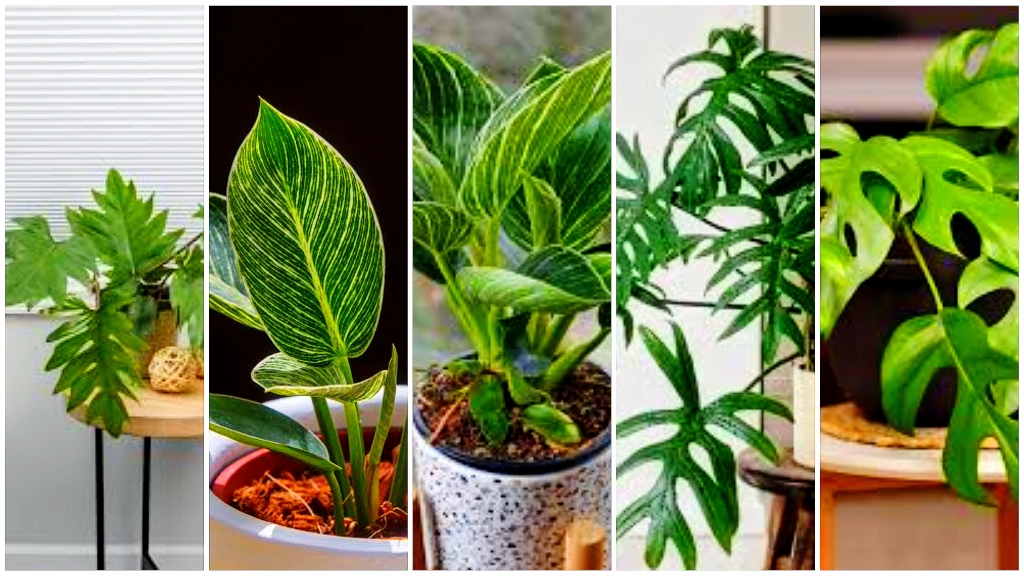If you want to bring jasmine plants to your home but don’t know what varieties are available then this post is for you.

Here, I will explain you 20 different types of jasmine plant.
- Orange jasmine
- Jasmine auricultam
- Italian jasmine
- Chilean jasmine
- Cape Jasmine
- Star jasmine
- Winter jasmine
- Himalayan jasmine
- Indian jasmine
- Primrose Jasmine
- Royal jasmine
- Silver jasmine
- Japanese jasmine
- Green jasmine
- Golden jasmine
- Wild jasmine
- Pink jasmine
- Forest jasmine
- Downey jasmine
- Arabian jasmine
Types of Jasmine Plant
1. Orange Jasmine

Murraya paniculata – Kamini. Kamini flowers have an aromatic orange-like fragrance. Not only does this compact Jasmine plant boast waxy white flowers, but it also emits an intense orange-blossom fragrance.The plant has anti-diabetic, anti-obesity, antibacterial, anti-implantation, anti-oxidative, cytotoxic, anti-diarrheal, antidepressant and anti-anxiety properties
2. Jasmine Auricultam

The Jasminum auriculatum leaves have numerous medicinal applications such as antilithiatic, wound healing activity and diuretic activity. They are used in the treatment of leprosy, skin. Juhi Jasmine Botanically known as Jasminum auriculatum from Oleaceae family. Common names are Jasmine molle, Indian Jasmine, Juhi, Jui, malle mokggu.
3. Italian jasmine

Plant in well-drained soil in full sun for optimum flower and scent power. Great to plant as a specimen close to a sitting area to enjoy the fragrance, or great for pots on a sunny porch or balcony. A relatively compact semi-evergreen climber with scented yellow flowers over a great season from Spring to late Summer.
4. Chilean jasmine

Most gardeners love fragrant plants, some even collect them, and there are fragrant flowers from almost every category of plant: perennials, shrubs, trees and vines.The Chilean Jasmine would be ideal to grow on a sunny wall outside if it’s in a mild area or if you do not have these particular conditions in your garden then a conservatory would be equally as good.
5. Cape jasmine

Gardeners in cooler regions often grow cape jasmine in containers, keeping it outside in the summer but then bringing it in as a houseplant in the winter. Considered to have antifungal and antibacterial properties, its fruit is an antiseptic and can be applied to callous ulcers, sores, aching teeth, scalds, burns and swellings. It is also used to cure jaundice.
6. Star Jasmine

Star jasmine grows best in a warm, sunny, sheltered spot with fertile, well-drained soil. In colder regions or frost-prone locations it usually needs winter protection. The flowers pack a huge punch of sweet fragrance and can easily perfume an entire yard.
7. Winter jasmine

Winter jasmine is fast-growing and spreads, making it a good plant to train to grow over a trellis or use as ground cover. They appear before the handsome, shiny green, trifoliate leaves unfurl. Winter Jasmine is ideal as a bank cover since it spreads where the stems touch the ground.
8. Himalayan jasmine

Himalayan Jasmine Flowers, 100% natural, are the key ingredient in Jasmine flower tea, infused with the delightful scent of jasmine blossoms. Given that jasmine tea is commonly derived from green tea leaves, it imparts numerous health benefits similar to those found in green tea.
9. Indian jasmine

It features large, white intensely fragrant flowers.The flowers of Indian jasmine are often used in religious ceremonies and for making perfumes and garlands. It is a deciduous climbing vine with dark green leaves.
10. Primrose jasmine

A mounding, well-branched evergreen shrub that bears bright yellow flowers in early spring, with scattered rebloom into summer. Primrose Jasmine is a fast growing, trailing shrub that can also act as a climber with the right support. In winter or spring, depending on geographic areas, a profusion of sweetly fragrant, semi-double, bright yellow flowers.
11. Royal jasmine

Around 4-6 hours of sunlight per day is ideal. Some species can tolerate more shade, but flowering may be reduced. Soil: Jasmine prefers well-draining, fertile soil with a slightly acidic to neutral pH 6.0-7.0.Jasminum grandiflorum, also known variously as the Spanish jasmine, Royal jasmine, Catalan jasmine, Sicilian jasmine, is a species of jasmine native to South Asia, the Arabian peninsula, East and Northeast Africa and the Yunnan and Sichuan regions of China.
12. Silver jasmine

Silver jasmine displays small, white flowers with a sweet fragrance. It is a climbing vine with silvery-gray foliage. Special Feature: The unique silver-gray leaves of Silver jasmine add a touch of elegance to any garden or landscape.
13. Japanese jasmine

Japanese Star Jasmine (Trachelospermum asiaticum) is an evergreen twining climber or ground cover with clusters of highly fragrant star-shaped cream flowers in summer. The form usually found in cultivation has semi-double flowers.It is not frost-hardy.
14. Green jasmine

Mogra which is famously known as Jasmine flower is one of the most beautiful and fragrant amongst all flowering plants in Asia. The flower is also referred to as Kundumalligai, Arabian Jasmine, Jai, Jui, Chameli, Madanban, Sayali, Kunda or Mallika.To scent teas and perfumes, one of two species are used: common jasmine (Jasminum officinale) or Arabian jasmine (Jasminum sambac). These can both be grown indoors.
15. Golden jasmine

Jasminum officinale ‘Fiona Sunrise’ is a striking vining plant that is loved by gardeners for its bold golden color, vigorous growth habit, and fragrant white blooms. Golden Poet’s Jasmine is an excellent trellis climber, but also makes a nice cascading addition to hanging baskets and mixed containers.
16. Wild jasmine

Jasminum angustifolium, the wild jasmine, is a species of jasmine native to India, Sri Lanka and the Andaman Islands. It is a climbing shrub with a smooth stem and minutely pubescent branchlets.Jasmine is used on the skin to reduce the amount of breast milk, for skin diseases, and to speed up wound healing. Jasmine is inhaled to improve mood, reduce stress, and reduce food cravings.
17. Pink jasmine

Plant your Staked Pink Jasmine next to a structure or use a trellis form to provide the vine with the support it requires as it grows. Use ties or wires to support your Pink Jasmine vine.Thrives in enriched, lightly moist, well-drained soils; avoid soggy soils. Best in full sun in cool coastal regions,benefits from some shade in hot, dry inland areas.
18. Forest Jasmine

Jasminum abyssinicum is a strong to slender woody climber in high-altitude montane forests, climbing into the forest canopy which stems that can be robust up to 13 cm in diameter. The flowers are produced at the ends twigs or in axils of leaves. The flowers are white, tinged with pink on the outside, sweetly scented with a corolla with 5 or sometimes 6 elliptic lobes.
19. Downey jasmine

Downy jasmine is a charming, fluffy , an evergreen shrub with bright white blossoms on and off all year. These flowers are seems to Star Jasmine. It is known as Kagada in Telugu. Sometimes called star jasmine, a name also used for other Jasmine species, downy jasmine is unusual for having non-fragrant flowers.
20. Arabian jasmine

If you’re interested in growing a jasmine plant indoors, start by selecting the proper jasmine species to meet your needs. To scent teas and perfumes, one of two species are used: common jasmine (Jasminum officinale) or Arabian jasmine (Jasminum sambac). These can both be grown indoors.






Leave a comment